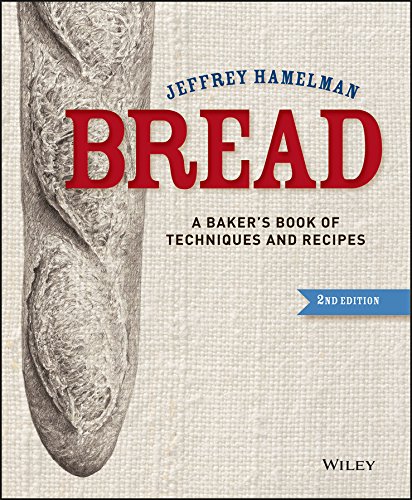




Bread: A Baker′s Book of Techniques and Recipes
J**S
You can't just flip to a recipe and get going
I imagine that for a person with some bread baking experience, this would be wonderful. It would join the dots together, and make them a better baker.Some people with little or no experience of baking really want to learn ALL about it before setting foot in the kitchen. This book would also be a very good base for them. This might be a personality trait, or this preference may apply to some people with specific ways of learning, autistic traits or dyslexia.The book explains things from a basic foundation and yet not in a way that would bore an experienced person either.However, for a non-bookish person who just wants to go and make the simplest bread as their first effort, this isn't the place to start. It would take a couple of hours to work out which recipe in there might even be the simplest.It took me a while to deduce that "kneading" is just what this book calls "mixing". Kneading means you do it with your hands and mixing you can do with a machine, and once you have a mixer you don't need to do any kneading if you don't want to, (hooray!). It's all in there though. If you want to knead, this edition has a section on exactly how to do that and why you will need to do more "folding" if you haven't used an electric mixer.The recipes are very short. This really works because there's a section on techniques at the beginning. It explains the process of making bread step by step and detailed explanation of terms and techniques so that needn't be repeated within the recipes. But some people will not take the time to read this book from the beginning, and those will be baffled if they flip to a recipe and encounter quite abbreviated instructions and terms. It'll say something like "Fold twice depending on dough strength", which means the novice has to turn back to page 13 and read 3 pages all about folding except if you haven't even glanced at the first 3 chapters you are going to be disheartened and just google a recipe instead.So yeah, great book, but if you bought it for a novice, they couldn't just flip to a recipe and get going.This is an American book, so talks mostly in ounces and Fahrenheit. Each recipe has a table including metric measurements but only for bulk amounts so a home baker will need to divide by 20 or convert from the avoirdupois (it turns out american ounces are the same as imperial, thank goodness he doesn't use fluid ounces). And each recipe requires a quick conversion of temperature when your oven is marked in Celsius.
M**Y
It's OK but some of the 'science' is plain wrong
Hamelman clearly knows his stuff as a baker and the book has some very good information and recipes. However some of the things he confidently asserts (e.g. that sourdough yeast can't reproduce without oxygen and therefore can't grow while dough is proving) are manifest nonsense. His style's a bit preachy... one doesn't mind being told of the nobility of doing things by hand rather then using an automatic dough-portioning machine, but after the 3rd or 4th repetition of this it begins to grate on one's nerves.
L**W
Not metric. US measurements. Good but for that.
Good book, but not metric.Temperatures etc. in Fahrenheit.Some measurements in metric (eg. Cups) but not enough to make the book convenient for non-US readers.
M**B
The best book for making bread
I have bought many books on bread making, and this is by far the best one. It works if you are a novice, or a professional, it is clear and very helpful. And written by a bread maker with a passion for his craft. I wish I had bought this book first - all the others are gathering dust now.
D**I
Very happy that I bought it.
Very good bread book. Recipes look a bit complicated at first if you are a beginner baker. It's important to read about different techniques and ingredients and their properties (all is explained in the book) before going to recipes.
Trustpilot
1 day ago
2 weeks ago